The sun barely crests the horizon as you grip the steering wheel, navigating your 4×4 through the morning mist that blankets Akagera National Park. A herd of elephants emerges from the acacia woodland to your left, their silhouettes massive against the golden light. This is your safari—no rushed schedule, no crowded tour vehicle, just you, the wild, and the freedom to linger as long as you desire.
Welcome to Rwanda’s best-kept secret: the self-drive safari in Akagera National Park.
The Road Less Traveled
While most visitors to Rwanda make the pilgrimage to Volcanoes National Park for gorilla trekking, the country’s eastern frontier tells a completely different story. Akagera National Park, hugging the border with Tanzania, represents Rwanda’s only Big Five safari destination and one of Africa’s most remarkable conservation success stories. Yet unlike the tourist-heavy circuits of the Serengeti or Kruger, Akagera remains blissfully uncrowded—and you can explore it entirely on your own terms.
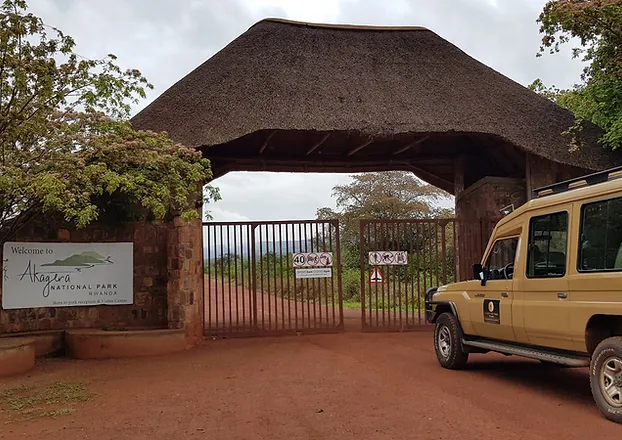
Self-drive safaris are relatively rare in East Africa, where most parks require professional guides. Rwanda breaks this mold, offering visitors the extraordinary opportunity to navigate Akagera independently, transforming a typical safari into an intimate adventure where you’re the guide, the tracker, and the storyteller.
A Park Reborn
To understand Akagera today, you must appreciate its phoenix-like resurrection. The park’s history mirrors Rwanda’s own journey of recovery and renewal. Originally established in 1934, Akagera once sprawled across 2,500 square kilometers. Following the 1994 genocide, returning refugees resettled much of the parkland, shrinking it to barely a third of its original size. Poaching decimated wildlife populations, and by the early 2000s, lions had been completely eradicated.
Enter African Parks, which assumed management in 2010 in partnership with the Rwanda Development Board. What followed reads like a conservation thriller: the translocation of seven lions from South Africa in 2015, the introduction of 18 eastern black rhinos from South Africa in 2017 and 2019, and the recent arrival of five white rhinos in 2021. Today, Akagera stands as the only park in Rwanda—and one of the few in Africa—where you can potentially spot all Big Five animals: lion, leopard, elephant, buffalo, and both black and white rhinos.
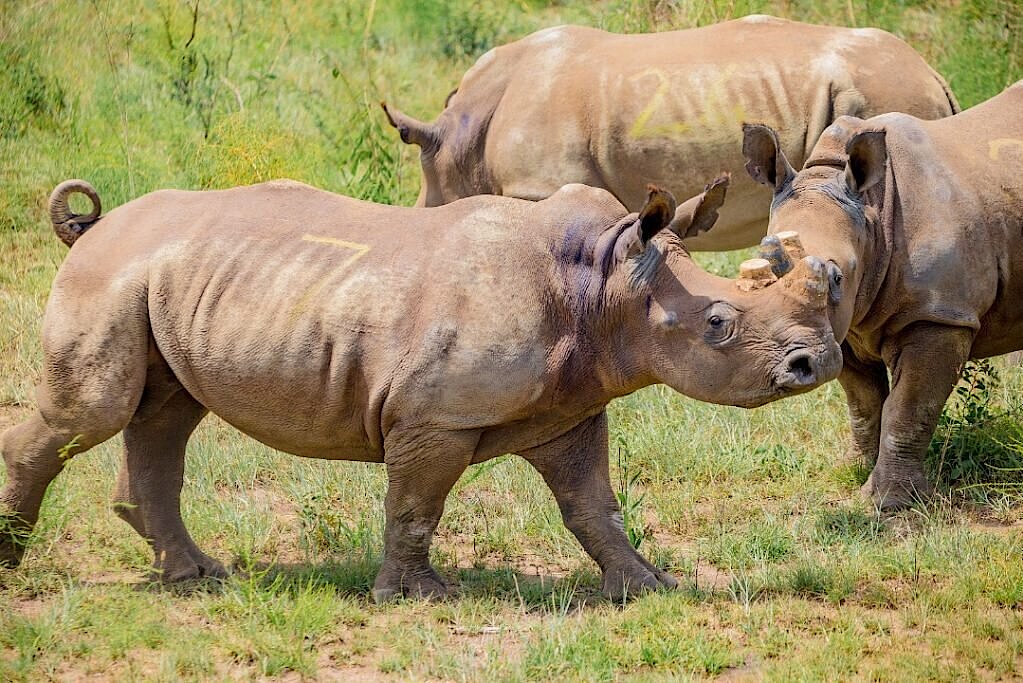
The numbers tell an impressive story. The park now boasts over 120 lions, a growing rhino population, and thriving herds of elephants and buffalo. But statistics don’t capture the magic of watching a lioness teaching her cubs to hunt or discovering a leopard draped languidly across an acacia branch.
Why Self-Drive?
The case for taking the wheel yourself is compelling, offering advantages that guided tours simply cannot match.
Freedom and Flexibility: On a guided safari, you’re bound to a predetermined schedule and route. Self-driving means you can spend two hours watching a pride of lions if you choose, or return to that promising waterhole at different times of day. Spotted something interesting down a side track? Follow your curiosity without consulting anyone.
Cost-Effectiveness: Self-drive safaris deliver exceptional value. Park entrance fees for foreign non-residents stand at $100 per person for 24 hours, with vehicle fees adding just $150 for 24 hours. Compare this to guided safari packages that can easily exceed $300-500 per person per day, and the savings become substantial, especially for families or small groups.
Authentic Exploration: There’s something profoundly satisfying about finding wildlife yourself. The anticipation as you scan the landscape, the surge of adrenaline when you spot something moving in the bush, the quiet satisfaction of successful tracking—these experiences feel more earned, more genuine, when you’re behind the wheel.
Intimate Experience: Without a guide’s commentary filling the silence, you’re forced to truly observe and listen. The sounds of the bush—birds calling, insects humming, the distant rumble of elephants—become your soundtrack. Your senses sharpen. You notice details that might otherwise slip past.
Pace Control: Early riser or leisurely starter? Night owl who wants to stay out until closing? Your internal clock dictates your schedule. Some of the best wildlife viewing happens in soft dawn light or during the golden hour before sunset, and self-driving lets you optimize for these magical moments.
Planning Your Adventure
A successful self drive safari in Akagera park requires more preparation than simply pointing your vehicle eastward from Kigali. Here’s what you need to know.
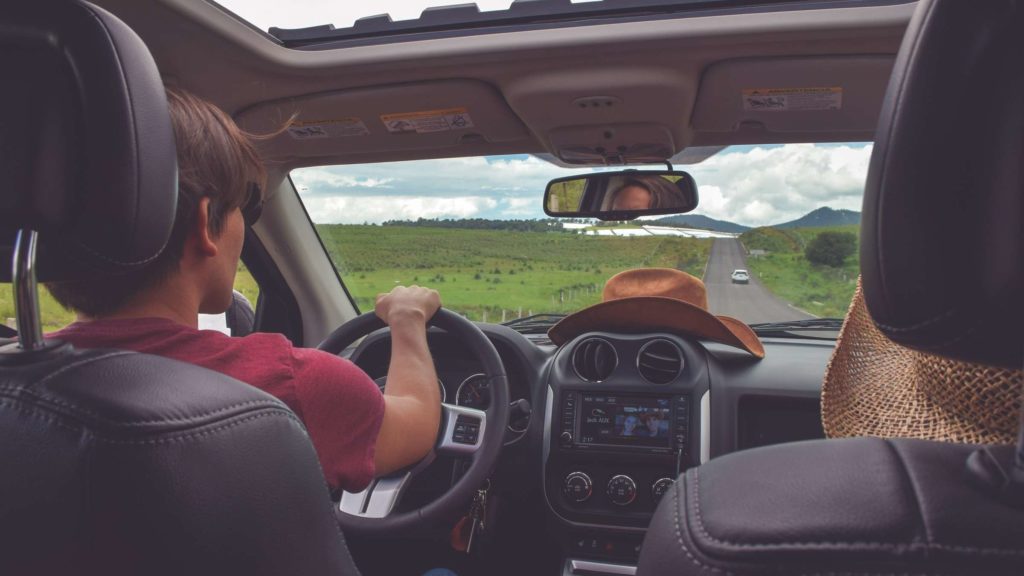
Getting There: Akagera sits approximately 110 kilometers east of Kigali, a journey of about 2.5 hours along increasingly rural roads. The drive itself offers a fascinating glimpse of Rwanda’s countryside—terraced hillsides, roadside markets, and villages where life unfolds at a different pace. The northern entrance at Kigali Gate provides the most convenient access, while the southern entrance at Akagera Gate works well for multi-day adventures.
Vehicle Requirements: A proper 4×4 vehicle is non-negotiable. Akagera’s roads range from reasonable dirt tracks to challenging, rutted paths that become muddy quagmires during the rainy seasons. Numerous rental companies in Kigali offer suitable vehicles, with daily rates typically between $80-150 depending on the model. Essential features include good ground clearance, reliable tires, and functioning air conditioning (trust me, you’ll want it during midday heat). Spare tires, jack, and basic tools should be verified before departure.
When to Visit: Akagera rewards visitors year-round, but timing affects your experience significantly. The dry seasons—June to September and December to February—concentrate wildlife around water sources, making animals easier to spot. Roads are more navigable, and mosquitoes less aggressive. The wet seasons—March to May and October to November—transform the landscape into lush green splendor. Birding reaches its peak as migratory species arrive, and baby animals dot the plains. However, heavy rains can make some tracks impassable and grass growth obscures smaller animals.
Duration: Budget at minimum a full day for Akagera, though two or three days unlock the park’s true potential. A single day lets you explore the main circuits and highlights. Multiple days allow you to camp within the park, experience dawn and dusk game drives, venture into less-traveled areas, and simply move at a more relaxed pace that increases your chances of significant wildlife encounters.
What to Bring: Preparation separates comfortable adventures from regrettable ordeals. Pack these essentials:
- Binoculars (absolutely critical for spotting distant wildlife)
- Camera with telephoto lens (wildlife maintains healthy distances)
- Detailed park map (available at entrance gates)
- Plenty of drinking water (more than you think you’ll need)
- Snacks and picnic supplies (no shops inside the park)
- Sunscreen, hat, and sunglasses
- Insect repellent
- Full tank of fuel (no refueling available within Akagera)
- Portable phone charger
- First aid kit
- Warm layer for early morning drives
Navigating the Network
Akagera’s road network follows a logical pattern once you understand its layout. The park stretches north to south along Lake Ihema and the Kagera River, with a series of interconnected tracks and designated circuits.
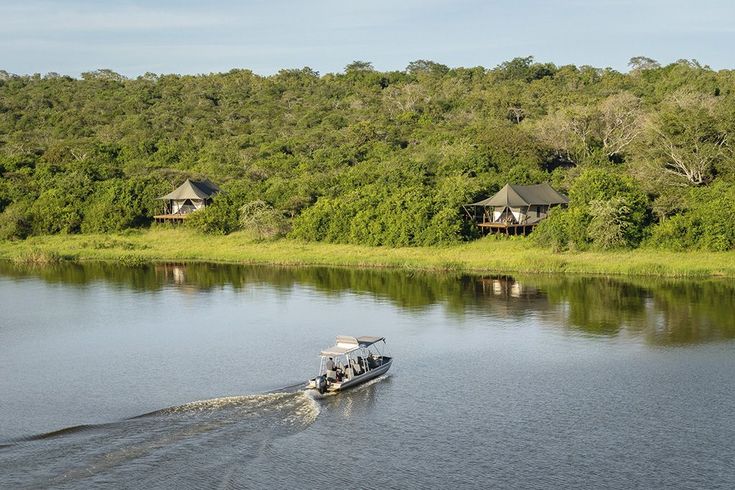
The Northern Circuit: This region showcases rolling hills, acacia woodlands, and the beautiful Lake Birengero. It’s prime territory for giraffe sightings—the Masai giraffes here number over 100 and seem almost habituated to vehicles. Elephants frequent this area, particularly near water sources. The northern section feels more forested and intimate than the open plains further south.
Central Lakes Region: The heart of Akagera centers on a string of lakes—Ihema, Rwanyakizinga, Mihindi, and Hago. These water bodies act as wildlife magnets, especially during dry periods. Lake Ihema, the park’s largest, hosts one of Africa’s highest concentrations of hippos—estimates suggest over 1,000 individuals. Crocodiles sun themselves on muddy banks, and bird diversity explodes along the shores. The roads circling these lakes offer some of Akagera’s most reliable game viewing.
Southern Plains: As you venture south, the landscape opens into classic African savanna—golden grasslands dotted with umbrella acacias. This is buffalo country, with herds sometimes numbering in the hundreds. Lions patrol these plains, and both black and white rhinos browse in designated zones. The southern section feels more exposed, more expansive, more like the East African parks of popular imagination.
Key Locations: Certain spots within Akagera consistently deliver. The Mutumba Hills in the north provide stunning vantage points for photography and orientation. Lake Ihema’s Heron Point picnic site offers safe restroom facilities and lunch spots with water views (though stay alert—hippos can wander surprisingly far from water). The rhino zones, marked on park maps, give you the best odds of spotting these critically endangered animals, though sightings require patience and luck.
Wildlife Encounters
The question every safari-goer asks: What will I see? While wildlife sightings can never be guaranteed—the uncertainty is part of the magic—Akagera offers excellent prospects for diverse encounters.
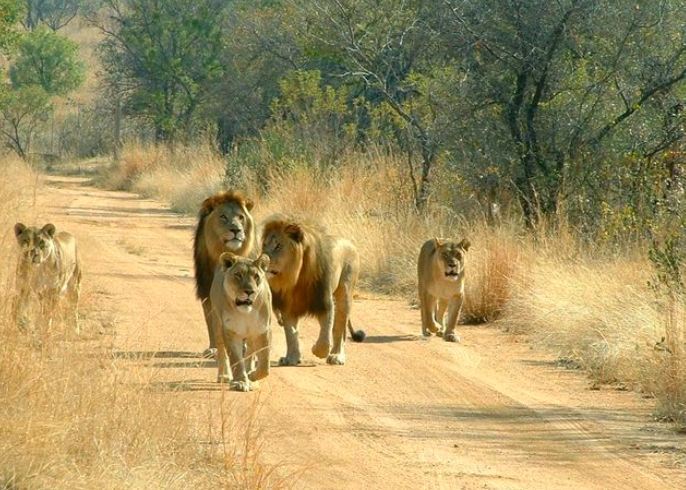
The Big Five: Lions have become the park’s poster children, with regular sightings especially in the southern plains and around Lake Rwanyakizinga. Prides often rest in shade during midday, becoming active toward evening. Rangers track their movements via GPS collars, though they don’t share real-time locations with visitors (preventing harassment and maintaining wild behavior).
Leopards, always the elusive cat, inhabit Akagera but sightings remain rare treats. Your best chances come from scanning acacia trees during early morning or late afternoon drives—leopards often drape themselves along branches to rest and escape insects.
Elephants roam throughout the park, with herds regularly spotted near lakes and in woodland areas. The population has rebounded to over 100 individuals, ranging from massive bulls to tiny calves.
Buffalo can be encountered anywhere but gather in impressive herds on the southern plains and around water sources. Approach with respect—buffalo are unpredictable and potentially dangerous.
Rhinos represent Akagera’s conservation crown jewels. The black rhinos, critically endangered, browse in designated areas primarily in the southern section. White rhinos, though more numerous globally, are also confined to specific zones. Spotting either species requires dedicated searching, patience, and often, considerable luck.
Beyond the Big Five: Akagera’s supporting cast deserves equal billing. Giraffes stroll with elegant nonchalance, their impossibly long necks silhouetted against the sky. Zebras stripe the plains in photogenic herds. Waterbuck, impala, topi, bushbuck, and oribi provide countless antelope sightings. Warthogs trot comically, tails held high like periscopes. Baboons and vervet monkeys add primate perspectives.
The park’s hippo population is genuinely extraordinary. Lake Ihema alone hosts hundreds, visible as grunting, snorting mounds in the water during the day. Crocodiles lurk along shorelines—massive Nile crocodiles that can exceed five meters in length.
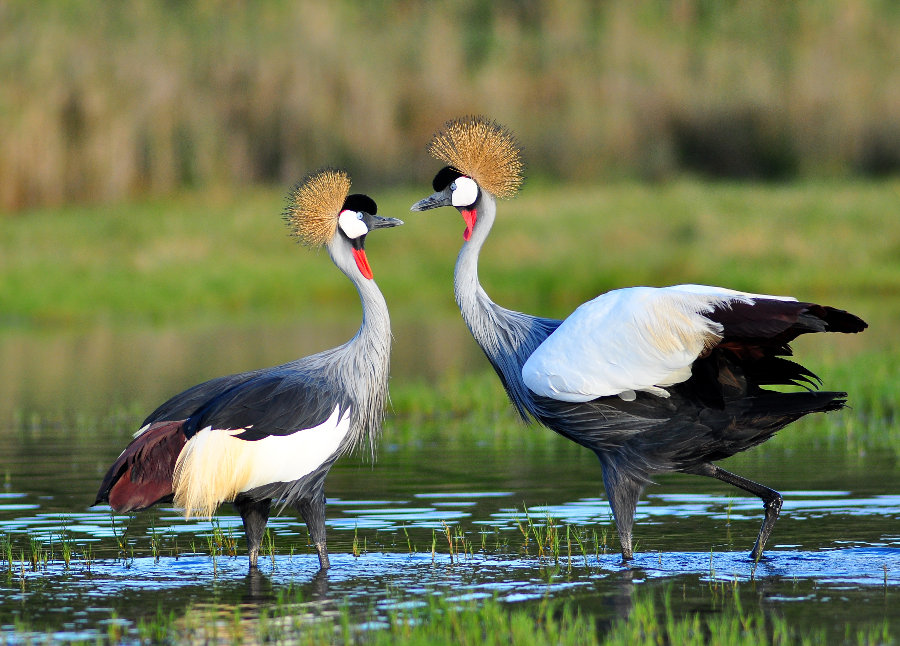
Birding Paradise: With over 500 recorded species, Akagera ranks among East Africa’s premier birding destinations. The shoebill stork, one of Africa’s most sought-after birds, inhabits the papyrus swamps (boat trips offer the best viewing opportunities). Fish eagles perch prominently, their haunting calls echoing across the lakes. Kingfishers flash jewel-like colors, while herons, egrets, and storks work the shallows in patient concentration. Raptors soar overhead—martial eagles, bateleurs, and secretary birds patrolling for prey.
The Art of the Safari Drive
Self-driving requires developing specific skills and adopting the right mindset. Here are hard-won lessons from the bush:
Drive Slowly: Speed is the enemy of wildlife spotting. Keep your pace between 15-30 kilometers per hour on most tracks. Animals blend remarkably well into their environments—that “termite mound” might be a rhino, that “grey rock” could be a sleeping lion. Slow driving lets your brain process the visual information and spot details.
Scan Systematically: Don’t just look ahead at the road. Scan left, right, and far into the distance. Check under trees (big cats love shade), look up into branches (leopards and birds), and watch distant ridgelines (they silhouette approaching animals). Binoculars extend your visual range dramatically.
Think Like Prey: Animals congregate around certain features for evolutionary reasons—water sources, shade, open sightlines that reveal approaching predators. Focus your attention on these high-probability areas rather than uniformly scanning endless bush.
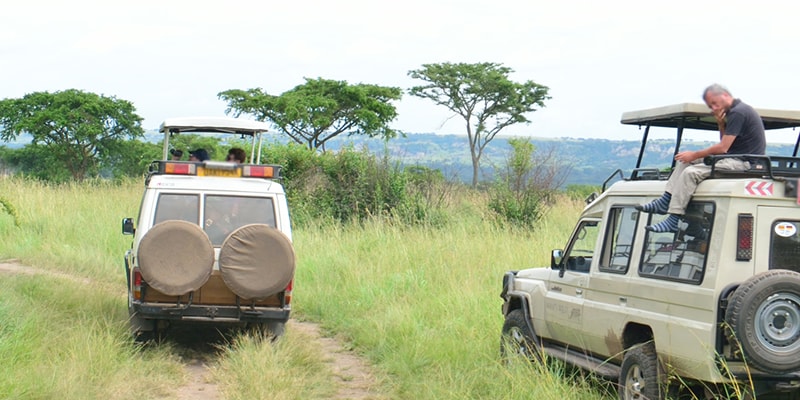
Stay Patient at Waterholes: If you find active water sources during dry periods, consider parking for extended observation. Wildlife rotates through predictably. That empty dam at 10 AM might host elephants by 11 AM and lions by noon.
Use Your Ears: Close the windows periodically and listen. The alarm calls of baboons or birds often reveal predators before you see them. The snorting of hippos announces their presence in thick vegetation.
Respect the Animals: Maintain safe distances—minimum 20 meters for most animals, considerably more for elephants, buffalo, and rhinos. Never position your vehicle between a mother and her young. If an animal seems agitated—ears back, mock charges, aggressive posturing—reverse slowly and give more space. Remember: these are wild animals, not zoo exhibits.
Stay in Your Vehicle: This rule is absolute except at designated picnic sites. Lions view humans as potential prey when outside vehicles but often ignore occupied cars. That false confidence disappears the moment you step out.
Anticipate Behavior: Watch animal body language for clues about what might happen next. Lions yawning and stretching often precede movement. Elephants dusting themselves might be preparing to leave a waterhole. Learning to read these signals lets you position for better photographs and observations.
Accommodation Options
Where you rest your head significantly impacts your Akagera experience.
Camping Within the Park: For the authentic bush experience, nothing beats camping inside Akagera. Several basic campsites—Muyumbu, Shakani, and Mutumba—offer ablution blocks, water, and stunning locations. Expect to pay around $30 per person per night. The sounds of nocturnal animals surround your tent: hyenas whooping, lions roaring in the distance, hippos grunting as they graze near camp. It’s simultaneously thrilling and slightly terrifying, which is precisely the point.
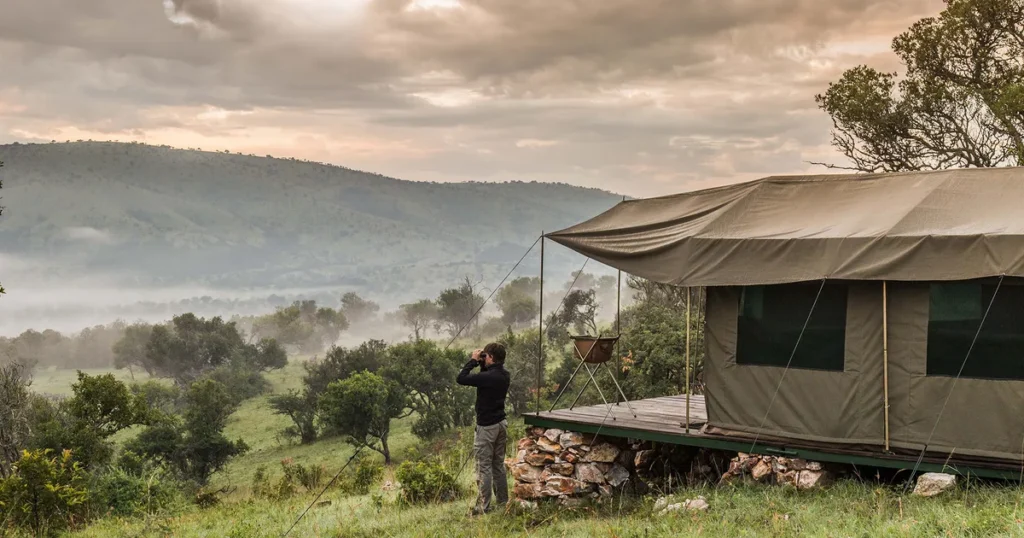
Karenge Bush Camp: This tented camp, managed by African Parks, provides comfort without sacrificing the safari atmosphere. Solar-powered tents feature proper beds, ensuite bathrooms, and small verandas. The camp overlooks Lake Rwanyakizinga, prime wildlife territory. Rates run approximately $150-250 per person per night including meals.
Magashi Camp: At the luxury end, Magashi delivers five-star safari sophistication. This partnership between African Parks and Wilderness Safaris features six elegant tented suites on Lake Rwanyakizinga’s shores, a main lounge with swimming pool, and gourmet dining. Rates start around $600 per person per night, all-inclusive.
Ruzizi Tented Lodge: Another upscale option, Ruzizi sits on a peninsula extending into Lake Ihema. Nine spacious tents with lake views, a restaurant, bar, and pool provide comfortable amenities. Rates average $250-350 per person per night with meals.
Outside the Park: Several lodges just outside Akagera offer budget alternatives. Staying outside means you’ll need to pay entrance fees for each day inside the park, but accommodation costs drop significantly. This works well for day-trippers from Kigali.
Beyond Game Drives
While self-drive safaris form Akagera’s core attraction, other activities diversify your experience.
Boat Safari on Lake Ihema: Operated by African Parks, these two-hour excursions provide aquatic perspectives impossible from vehicles. Hippos approach close (sometimes uncomfortably so), crocodiles sun on banks, and waterbirds perform for photographers. The boat also accesses papyrus swamps where shoebills lurk. Cost runs about $40 per person. Boats depart morning and afternoon from Ihema’s southern edge.
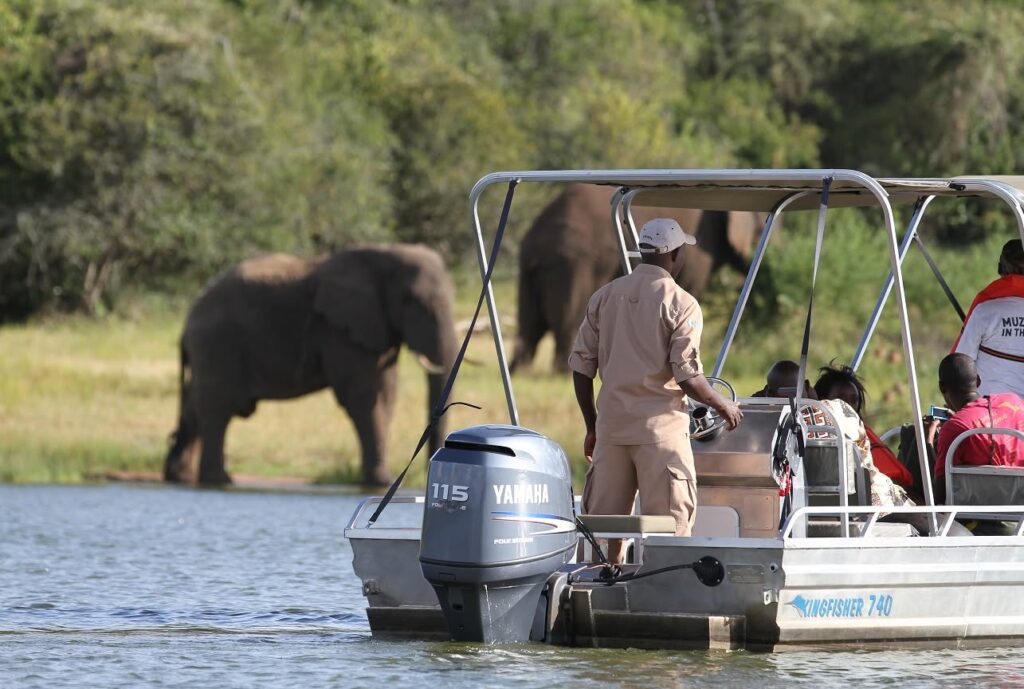
Sport Fishing: Lake Shakani allows catch-and-release fishing for various species including catfish and tilapia. It’s a surprisingly meditative activity after the intensity of game drives.
Behind-the-Scenes Conservation: For those interested in the park’s conservation work, African Parks occasionally offers specialized experiences like rhino tracking with rangers (subject to availability and advance booking). These provide insights into the enormous effort required to protect and monitor endangered species.
Night Drives: While self-drive night drives aren’t permitted, you can book guided night drives with park rangers. Nocturnal species invisible during day—bushbabies, genets, civets, hunting lions—emerge after dark. The park transforms completely under stars and spotlight.
Practical Considerations
A few additional details smooth your Akagera adventure.
Entry Fees and Timing: Foreign non-residents pay $100 per person for 24 hours, $150 per person for 48 hours. East African residents enjoy reduced rates. Vehicle fees add $150 for 24 hours. Gates open at 6 AM and close at 6 PM (you must exit by closing time). Payment accepts cash (US dollars, Rwandan francs) and credit cards, though cash remains more reliable.
Communication: Mobile phone coverage exists near entrances and occasionally around major lakes, but disappears throughout much of the park. Download offline maps before entering. Consider this digital detox a feature, not a bug.
Food and Fuel: Stock up completely in Kigali. While Kayonza town, about 40 minutes from the park entrance, offers limited supplies, selection is minimal. Inside the park, you’ll find absolutely nothing. Fuel up fully before entering—no filling stations exist within Akagera.
Safety: Self-drive safaris are remarkably safe when you follow basic rules. Stay in your vehicle except at designated sites. Keep all food sealed and stored. Don’t feed animals. If you encounter elephants or buffalo on roads, switch off your engine and wait patiently for them to move. Most animals want nothing to do with vehicles.
Weather and Roads: Road conditions vary dramatically. After heavy rains, tracks become slippery and muddy. Some routes may be temporarily closed. Check conditions at entrance gates and heed rangers’ advice. Four-wheel drive capability is essential, but you’ll rarely need to engage it on main routes during dry periods.
Conservation and Community Impact
Your visit to Akagera supports conservation beyond simply paying entry fees. Revenue funds the partnership between African Parks and the Rwanda Development Board, financing ranger patrols, anti-poaching operations, infrastructure maintenance, and ongoing restoration efforts.

Akagera also demonstrates the successful integration of conservation and community development. The park employs hundreds of local staff and sources supplies from nearby communities. Tourism revenue supports healthcare clinics, schools, and infrastructure projects in surrounding areas. The transformation of former poaching hotspots into thriving wildlife refuges while maintaining community support represents a conservation model worthy of replication.
Making Memories, Not Just Sightings
The irony of safari travel is this: you’ll remember specific animal encounters vividly—the lion pride sleeping in a pile, the elephant matriarch protecting her calf, the leopard’s luminous eyes locked with yours. But you’ll also remember quieter moments that creep up on you: the way morning mist rolls across Lake Ihema, the symphony of hippo grunts echoing at dusk, the profound silence of the plains under midday sun, the satisfaction of successfully navigating a challenging track.
Self-drive safaris amplify these quieter rewards. Without a guide managing logistics and directing attention, you’re forced to be fully present. Navigation demands focus. Wildlife spotting requires observation. Decision-making keeps you engaged. You’re not a passenger on someone else’s tour; you’re the protagonist in your own adventure story.
Your Turn to Drive
Rwanda has worked tirelessly to build its reputation as a premium safari destination while maintaining the intimate, uncrowded experiences that make African safaris magical. Akagera represents the culmination of this vision—a world-class park that you can explore independently, at your own pace, on your own terms.
The self-drive safari isn’t for everyone. It requires more preparation than joining a guided tour. It demands comfort with uncertainty—wrong turns, unclear tracks, no guaranteed sightings. But for those willing to embrace the challenge, it delivers something infinitely more valuable than convenience: authentic connection with wild Africa and genuine adventure on your own terms.
So rent that 4×4, pack those binoculars, fuel up in Kigali, and point yourself eastward toward Rwanda’s untamed frontier. The elephants of Akagera don’t care whether you’re on a guided tour or navigating solo. The lions don’t distinguish between experienced safari-goers and first-timers. The magic of Africa doesn’t require credentials or expertise—just curiosity, respect, and the courage to follow that dusty track around the next bend to see what awaits.
Your next great adventure is waiting. All you have to do is take the wheel.
To rent a 4×4 car with a driver-guide or self drive safari to Akagera national park- simply contact us now by sending an email to [email protected] or call us now on +256-700135510 to speak with the reservations team.
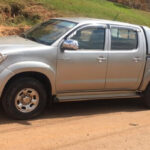
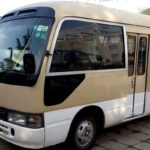
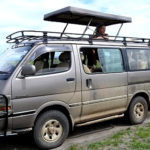

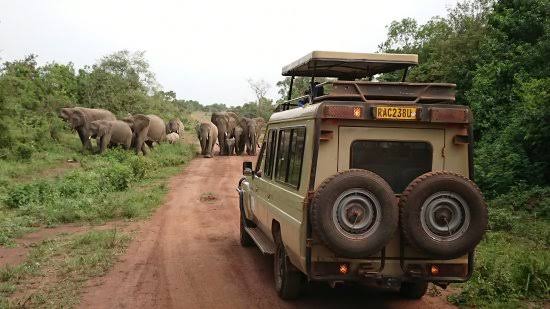
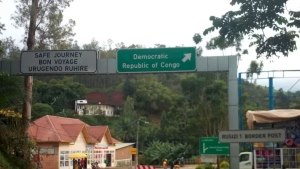
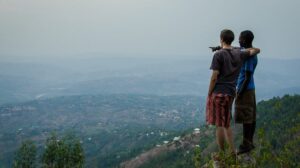
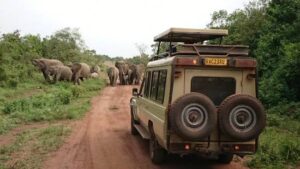
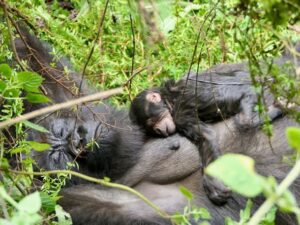
More Stories
A Deep Dive into Rwanda’s Toughest Safari Vehicles
Rwanda Car Rental Services: Reliable Car for Every Adventure
4×4 Car Rental Rwanda: Your Ultimate Safari Companion